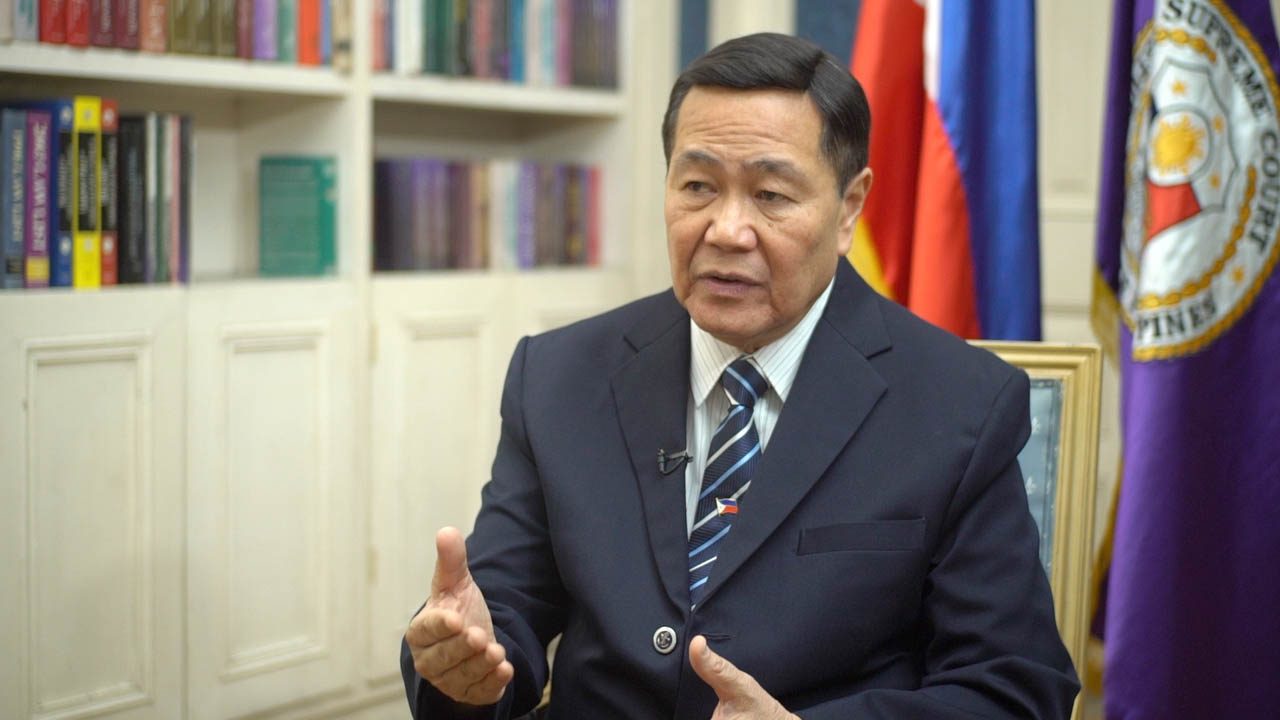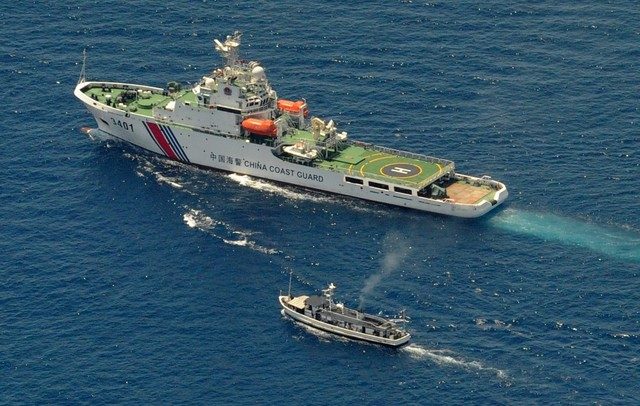SUMMARY
This is AI generated summarization, which may have errors. For context, always refer to the full article.

MANILA, Philppines (UPDATED) – As China declared it wanted the South China Sea Code of Conduct signed by 2022, retired Supreme Court Senior Associate Justice Antonio Carpio warned the sea code must not be used to legitimize Beijing’s unlawful behavior in the maritime region.
Carpio said it is incumbent upon countries in the Association of Southeast Asian Nations (ASEAN) to ensure that the long-delayed sea code will have written provisions stating “without any ambiguity, that the Code does not supplant or supersede the UNCLOS [United Nations Convention on the Law of the Sea] in anyway.”
“The Code should not be used to legitimize claims or activities that are otherwise illegal under international law. The Code should not be a vehicle to allow China to recover what it had already lost under the arbitral ruling in the South China Sea arbitration at The Hague,” Carpio said in a speech at the ADR Stratbase forum on the South China Sea code on Monday, October 28.
Leaders of Southeast Asian states are scheduled to meet for the 35th ASEAN summit in Thailand from October 31 to November 4. The DFA on Monday said state leaders are expected to state their positions on the South China Sea and code of conduct though formal negations will take place on lower levels.
Carpio said the most pressing problem in ASEAN today did not involve member states against one another but the territorial and maritime dispute that had half of its members states against China. These include the Philippines, Vietnam, Malaysia, Indonesia, and Brunei who all possess claims in the South China Sea.
“While the Spratlys dispute also involves overlapping territorial claims among the Philippines, Vietnam, Malaysia, and Brunei, these ASEAN member-states have an informal understanding to maintain the status quo in the Spratlys,” Carpio said.
“China refuses to respect this status quo in the Spratlys and has been aggressively intimidating claimant states, notably the Philippines, Vietnam, and Malaysia, through…acts of intimidation exercised by paramilitary vessels and forces under the direction of the Chinese military,” he added.
In his speech, Carpio, who was one of the legal minds who helped prepare the Philippines’ successful arbitration case against China and is a staunch defender of the West Philippine Sea, offered 5 ways ASEAN states with clams in the South China Sea could counter Chinese intimidation and enforce the landmark Hague ruling.
These include the following:
Signing a convention that states that territorial disputes in the Spratlys shall be settled peacefully through negotiations and special agreements through arbitration in accordance with international law
- While this is pursued, Carpio said the status quo should be maintained in the meantime and that ASEAN states should agree that no force, threat of force, or “intimidating gray zone tactics” – which should be clearly defined – should be used by any party.
- Carpio said this will also “isolate China as the only disputant state resorting to gray zone tactics and refusing to maintain the status quo.”
Enter into a convention declaring that the high-tide geologic features in the Spratlys generate only territorial seas and that none of these features generate an exlcusive economic zone (EEZ), as declared by the Hague ruling
- This, Carpio said, will serve to guide outside powers on the extent of freedom of navigation and overflight operations (FONOPs) in the Spratlys
- It can also be opened for accession by countries like the US, UK, France, Australia, Japan, India and Canada. These states regularly conduct FONOPs.
Philippines, Vietnam, and Malaysia can demarcate their overlapping EEZs and extended continental shelves in the Spratlys
- This can be based on the Hague ruling that all high-tide geologic features in the Spratlys generate only territorial sea, not EEZs. (READ: High tide or low tide? The question that won us the West Philippine Sea case)
Sign a convention declaring the entire Spratlys area an international marine protected area
- This is in the best interest of all 5 ASEAN states as the Spratlys are the spawning grounds of fish in the South China Sea. Without it, Carpio said, fish stock in the maritime region will collapse.
- In line with this, only civilian facilities should be allowed in the Spratly, while existing military ones converted into marine research facilities.
- Carpio said China will be the “number one beneficiary” of this move as the country takes over 50% of annual fish catch in the South China Sea.
Conduct joint patrols beyond territorial seas of the high-tide geologic features in the Spratlys
- This can be a way for the 5 ASEAN claimant states to enforce international laws and conventions on the enviorment, piracy, and marine conservation and biodiversity.
- It will also enforce freedom of navigation and the Hague ruling by state practice, said Carpio.

Speeding up negotiations
Carpio likewise warned against China’s declaration that it wanted the sea code signed by 2022. The retired justice recalled that China had claimed in the past it will sign a code of conduct “at the appropriate time,” which Carpio argued would likely be when Beijing finished its island building and reclaimed Scarborough Shoal.
“We know that China is just biding its time. China’s strategic plan to control the South China Sea for economic and military purposes dictates that it must build an air-and-naval base on Scarborough Shoal…. It’s just a matter of time before China makes it move,” Carpio said.
Carpio said this may happen before President Rodrigo Duterte ends his term in 2022 as Duterte had mentioned there was nothing he could do to stop China from building on Scarborough Shoal. (READ: China at 70: ‘Fantasy of cordial relations’ with the Philippines)
“This is practically flashing the green light to China to build on Scarborough Shoal. This means that the President Duterte will not send the Philippine Navy or Air Force to even show a token resistance if China builds on Scarborough Shoal,” he said, adding China is aware of this and would have to make its move before a new administration comes in.
Carpio had previously offered the Duterte administration at least 6 ways it could enforce the landmark Hague ruling in the West Philippine Sea “without going to war with China, using only the rule of law.”
The Duterte administration refused to do so, despite demanding Carpio to provide solutions. Presidential Spokesperson Salvador Panelo dismissed Carpio’s suggestions, saying Duterte’s way was still the “best” course of action.
Three years after the Philippines’ victory at the Hague, Carpio hit the Duterte administration for doing “absolutely nothing” to enforce the award. – Rappler.com
Add a comment
How does this make you feel?
There are no comments yet. Add your comment to start the conversation.